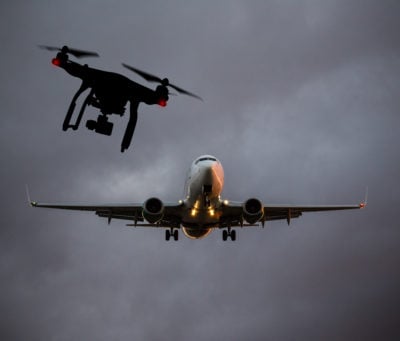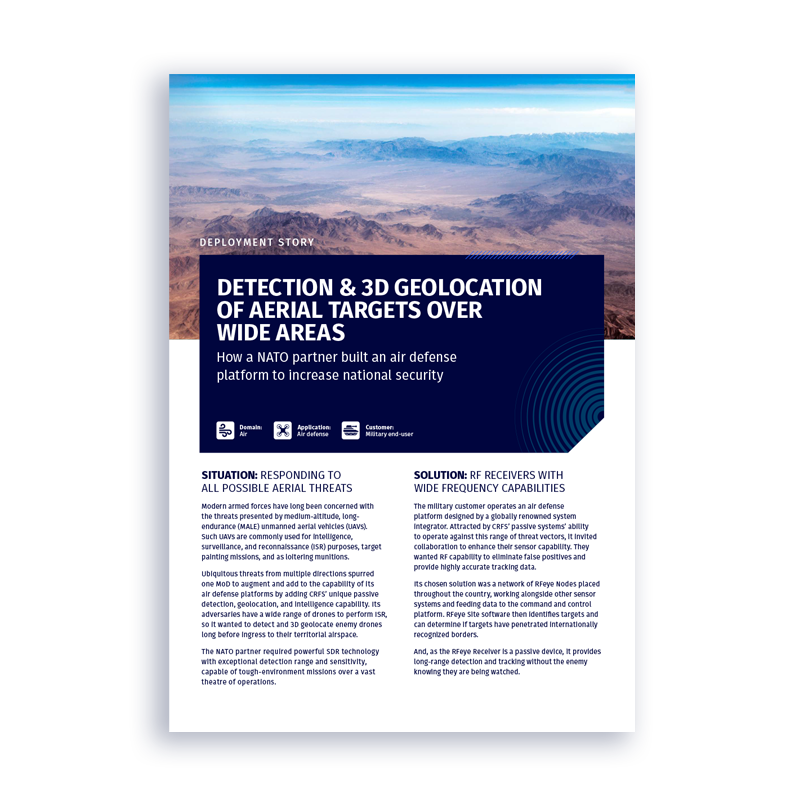
News of drones disrupting flights at London Gatwick airport in 2019 brought to fore the need for permanent, integrated drone detection systems at major airports.
The Gatwick incident was declared a “deliberate act” by UK Police; not some hobbyist who accidentally strayed too close to the airport perimeter, but instead, someone who was purposefully trying to disrupt flights and cause panic and chaos. However, there is still some question whether the drone actually existed at all.
Real or fake, the authorities chose to close the airport due to the potentially devastating impact of a drone strike on an airplane. By closing the airport millions of pounds in revenue was lost (not just for the airport and airlines but also for the wider economy) and thousands of people’s travel plans were disrupted. So what can be done to combat drones and make sure that a) a viable threat can be detected and b) the drone and its operator can be apprehended?
How to detect drone intrusions
The problem with drones entering restricted airspace is two-fold.
Confirming the threat
First, the drone needs to be detected before it can cause a problem. At Gatwick the first indication of drone activity was when two drones were allegedly seen flying across the airfield. An ideal approach would be to employ an integrated system of sensors including radar, optical detection and RF spectrum monitoring. This type of system was eventually brought in and used at Gatwick.
How does RF help?
Many drones have on-board data link transmitters for real-time sensor download such as video links (typically in the 2.4 GHz ISM band). These RF signals can be detected and geolocated by spectrum monitoring systems long before the drone enters restricted airspace. By using an integrated system, the airport security team will have verifiable evidence of whether a drone has entered restricted airspace or whether it is potentially a false alarm.
Locating the operator
The second problem is what to do if a drone actually has been detected. There are a proliferation of drone counter measures on the market, from jammers to kinetic options (lasers, missiles, nets and even birds of prey). Many of these options have been designed for military operations and aren’t always suitable or applicable to a civilian airport. Sometimes the best way to stop a drone is to stop the source; to detect who is controlling the drone and find out where they are located. Again, RF detection and geolocation can help. It is possible to geolocate the control signal from the operator using RF spectrum monitoring. Security services can then be alerted to intercept the operator with precise location coordinates. Detecting these control signals can be difficult, hence we would always recommend a multi-layered, integrated approach to drone detection.
The Gatwick drone incident has shown that a relatively inexpensive device (or even the threat of a device) can create a very expensive problem, not to mention the wider safety implications. By employing a permanent and integrated drone detection system at airports and other restricted locations, organizations can better protect themselves from the threat of illegal drones.
More Information
CRFS provides key drone detection technologies to both system integrators and end users. These systems have been successfully deployed in live environments. More about drone detection.

Deployment story
Detection & 3d geolocation of aerial targets over wide areas
How a NATO partner built an air defense platform to increase national security
